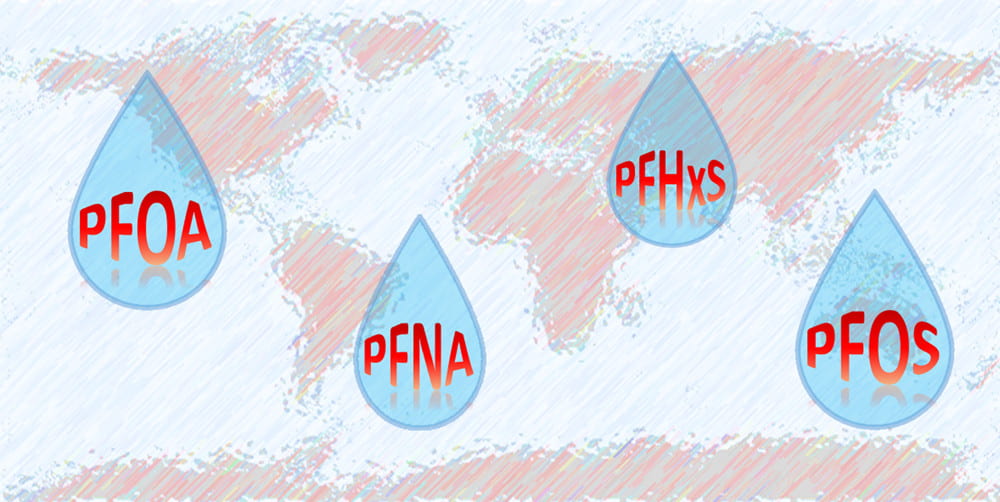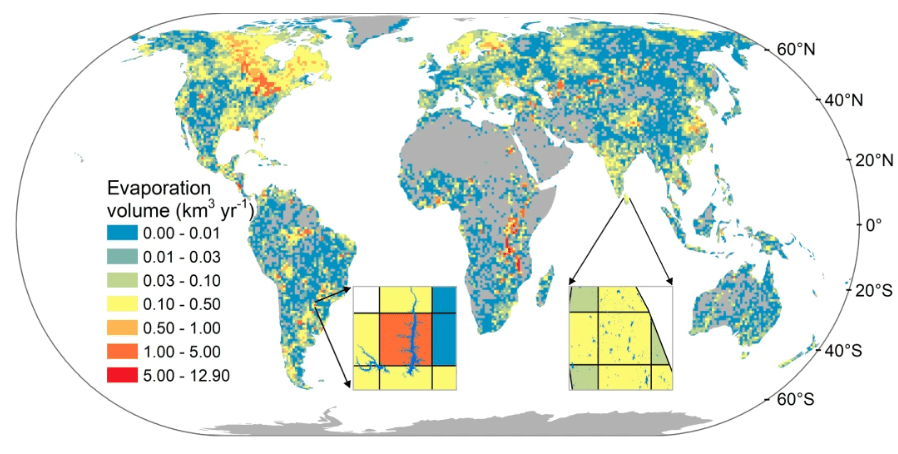With 38 public universities and 35 private colleges and universities in the state and many more across the country (and the world) interested in Texas, there’s a great deal of academic scholarship focused on water in the Lone Star State. In this column, I provide brief summaries to several recent academic publications on water in Texas.

Let’s start thinking about water!
Outside the safe operating space of a new planetary boundary for per- and polyfluoroalkyl substances

The headline on the front page of the Austin American-Statesman (and elsewhere) was alarming: “Study: ‘Forever chemicals’ found in rainwater.” As a strong rainwater advocate and co-owner of a cabin with rainwater for potable water, the last thing I want to drink are bio-accumulating “forever chemicals” (unless, perhaps, it’s mixed with vodka). The forever chemicals are per- and polyfluoroalkyl substances, what the kool kids call PFAS. They are referred to as forever chemicals because they degrade ssslllooowwwlllyyy. How slowly? Because of strong carbon-to-fluorine bonds, it takes hundreds to more than a thousand years for these bonds, and thus chemicals, to break down in nature. So not truly “forever,” but forever as compared to we-can’t-fix-this-in-the-next-Congressional-session timeframe. The lead author has been scarily quoted as saying “There is nowhere on Earth where the rain would be safe to drink.” PFAS are connected to hormone disruption, immune suppression, kidney cancer, fertility, and carcinogenic issues. And PFAS accumulates in the body over time. The authors compared concentrations measured across the planet to EPA’s health guidelines and found unhealthy levels of PFAS everywhere they looked except Antarctica and Tibet. If you drink rainwater, EPA has some information on how to reduce PFAS in your drinking water, including activated carbon (works on some, not others), ion-exchange, and nanofiltration or reverse osmosis.
Citation
Cousins, I.T., Johansson, J.H., Salter, M.E., Sha, B., and Scheringer, M., 2022, Outside the safe operating space of a new planetary boundary for per- and polyfluoroalkyl substances (PFAS): Environmental Science and Technology, DOI: 10.1021/acs.est.2c02765.
Evaporative water loss of 1.42 million global lakes

Spatial distributions of global lake evaporation volume. Source: Nat Commun 13, 3686 (2022)
Gang and collaborators (including Yao Li from Texas A&M University) evaluated evaporation losses at (gulp) 1,420,000 lakes across the planet, and the news ain’t good, although not unexpected. With increasing temperatures, evaporation also increases, and, indeed, Gang and gang found this and quantified it. They found that long-term global average lake evaporation is about 1,500 cubic kilometers (1.2 billion acre-feet) per year and has increased by about 3.12 cubic kilometers (2.5 million acre-feet) per year between 1985 and 2018. That may not sound like a lot, but over the 33-year period of the study, that amounts to an overall increase of 103 cubic kilometers (84 million acre-feet) per year or 7%. Extend that decades into the future, and we’re talking about some real water heading upstairs. For the thermal regions that include Texas, the authors saw a 1.6% to 2.0% increase per decade in evaporation rate for lakes. Interestingly, Gang and team saw greater increases in evaporation for human-made lakes (reservoirs) at 5.4% per decade compared to all lakes at 2.1% increase. It wasn’t clear from the paper why this is (although I was on my fifth shot of espresso), but they note that many of the reservoirs are located in more temperate zones, while there are a number of natural lakes in the more northern and southern latitudes and covered, at least for the time being, by ice.
Citation
Gang, G., Li, Y., Zhou, L., and Gao H., 2022, Evaporative water loss of 1.42 million global lakes: Nature Communications, 13:3686 | https://doi.org/10.1038/s41467-022-31125-6
Declining tropical cyclone frequency under global warming
While I don’t consider myself an expert on this topic, I’ve done some reading on it in the past and vaguely keep up with the literature, including summaries published by the Intergovernmental Panel on Climate Change. The last time I checked, the science had congealed around stronger and wetter storms but was uncertain about changes in the number of storms with increased warming. One cool (yet tragic) thing about where we are now with warming is that we can directly observe what’s happening. Chand and others do just that by using long-term tropical cyclone proxies and modeling experiments to show declining trends in the annual numbers of tropical cyclones.
The historical record is not perfect with systematic direct identification and observation of tropical systems not achieved until the advent of weather satellites in the 1970s. Before the 1970s, I suppose the philosophical question is: if a tropical cyclone whirls in the ocean and no one is there to observe it, does it make it found? The authors use information from the 20th Century Reanalysis Project, in which various parties have used actual past events since 1836 (such as the Blizzard of 1888) to recreate climatic conditions to inform an overall database of historical climatic conditions. Using this information, the authors found substantial (overall 20%) decreasing trends in cyclone frequency in all parts of the world since about 1900 except for in the North Atlantic, where tropical cyclone frequency declined from about 1880 to 1950 and then increased since 1950. The authors suggest the North Atlantic is the odd sea out due to multi-decadal variability and reduced aerosols (and associated climate forcing) since the 1970s.
Citation
Chand, S.S., Walsh, K.J.E., Camargo, S.J., Kossin, J.P., Tory, K.J., Wehner, M.F., Chan, J.C.L., Klotzbach, P.J., Dowdy, A.J., Bell, S.S., Ramsay, H.A., and Murakami, H., 2022, Declining tropical cyclone frequency under global warming: Nature Climate Change, v 12, p. 655–661.
Join Our Mailing List
Subscribe to Texas+Water and stay updated on the spectrum of Texas water issues including science, policy, and law.
